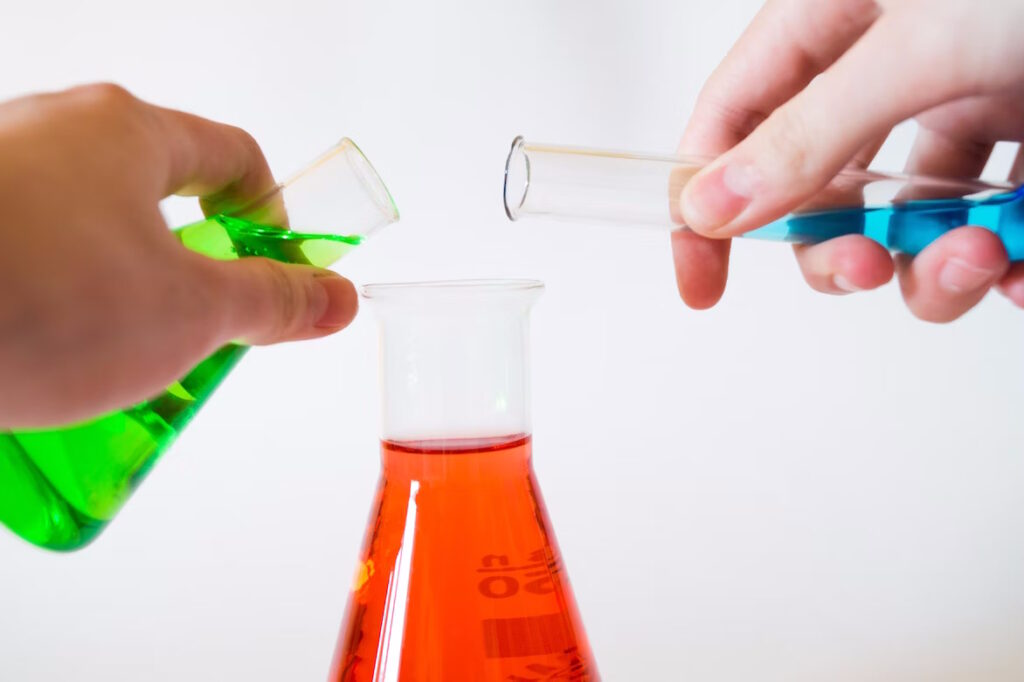The global pursuit of a sustainable future has led various industries to adopt ambitious net zero targets. The life science sector, encompassing pharmaceuticals, biotechnology, and healthcare, is no exception. As the demand for innovation and environmentally-friendly solutions grows, the industry has been actively investing in research and development to drive the net zero agenda. In this blog post, we will explore the remarkable advancements in green chemistry and carbon capture technologies that are shaping the future of the life science sector.
Green Chemistry: Sustainable Alternatives
Green chemistry, also known as sustainable chemistry, focuses on developing chemical processes and products that minimize the use and generation of hazardous substances. It aims to reduce the environmental impact of the chemical industry while maintaining high product quality and efficacy. Several key innovations in green chemistry have emerged, enabling the life science sector to transition towards net zero emissions.
- Bio-based and Renewable Materials: Life science companies are increasingly turning to bio-based and renewable materials as alternatives to traditional chemicals derived from fossil fuels. These materials can be obtained from biomass, agricultural waste, or other sustainable sources. By utilizing renewable feedstocks, companies can reduce their carbon footprint and dependency on non-renewable resources.
- Solvent Substitution: Traditional chemical processes often involve the use of volatile and hazardous solvents. Green chemistry promotes the use of safer and more environmentally friendly solvents, such as water or bio-based alternatives. By eliminating or reducing the use of toxic solvents, the life science sector can minimize its impact on human health and the environment.
- Catalysis and Biocatalysis: Innovations in catalysis and biocatalysis have significantly contributed to greener chemical reactions. Catalysts facilitate chemical transformations while remaining unchanged, thereby reducing waste and energy consumption. Biocatalysis utilizes enzymes or whole cells as catalysts, offering high selectivity and efficiency. These approaches not only minimize environmental impact but also enable the production of complex molecules with greater precision.

Carbon Capture Technologies: Tackling Emissions
In addition to green chemistry, carbon capture technologies are playing a pivotal role in the life science sector’s innovation and journey towards net zero emissions. These technologies focus on capturing and storing carbon dioxide (CO2) generated by various industrial processes, preventing its release into the atmosphere.
- Direct Air Capture (DAC): DAC technology involves capturing CO2 directly from the air using specialized absorbents or solvents. Once captured, the CO2 can be stored underground or utilized for various purposes, such as carbon-neutral fuel production or enhanced oil recovery. By deploying DAC systems, life science companies can actively reduce their carbon footprint and contribute to global decarbonization efforts.
- Carbon Capture, Utilization, and Storage (CCUS): CCUS technologies capture CO2 emissions from industrial sources, such as pharmaceutical manufacturing plants, and divert them for storage or beneficial use. CO2 can be utilized in the production of chemicals, materials, or even in the cultivation of algae for biofuel production. CCUS offers a dual benefit by reducing emissions and transforming CO2 into valuable resources.
Collaboration and Future Outlook for innovation
The net zero agenda in the life science sector relies on collaborative efforts between industry stakeholders, academia, and policymakers. The exchange of knowledge, funding support, and regulatory frameworks are crucial to driving the adoption of innovative technologies and sustainable practices.
As the demand for greener solutions continues to grow, it is essential for life science companies to invest in research and development, prioritize sustainability in their operations, and integrate net zero strategies into their long-term plans. This commitment will not only benefit the environment but also position these companies as leaders in the transition to a sustainable future.
Final thoughts on innovation
The life science sector is making significant strides towards achieving net zero emissions through the adoption of innovative technologies. Green chemistry is revolutionizing chemical processes by offering sustainable alternatives to traditional chemicals and promoting safer and environmentally friendly practices. Simultaneously, carbon capture technologies are playing a vital role in tackling emissions and facilitating the transition to a low-carbon economy.
By embracing these innovations and fostering collaboration, the life science sector can continue to drive the net zero agenda, contributing to global efforts to combat climate change. The pursuit of sustainability and innovation in the life science industry is not only essential for the planet but also for improving the health and well-being of communities worldwide.
The 2nd Net Zero Life Sciences Forum, taking place on the 16-17th of November in Berlin, Germany. Expert speakers will share their insights, innovation and practical experiences, highlighting the latest strategies, technologies, and best practices for achieving carbon neutrality. Visit future-bridge.eu and netzero-events.com or follow us on our social media to track other energy use and decarbonization events.





